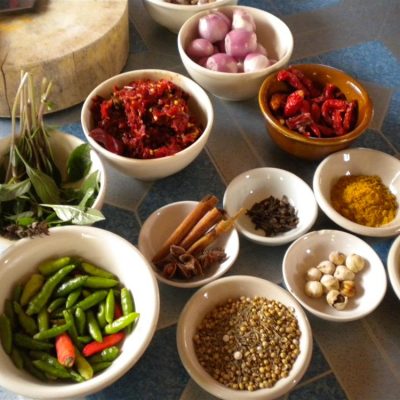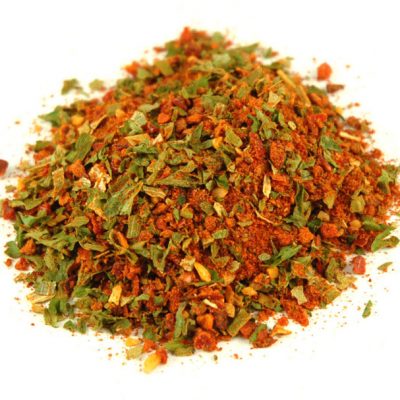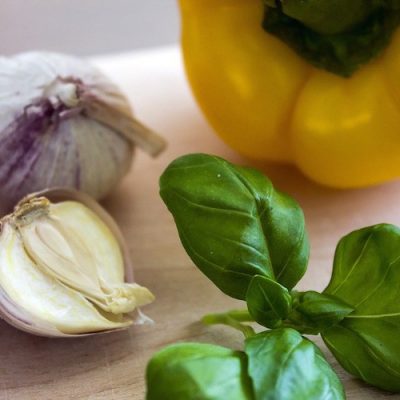Spices
What’s the secret to making exceptional dishes?
THE STORY behind MELLINO GOURMET SPICES & BLENDS
As a young Argentine girl, Marina Mellino was introduced to the kitchen by her Nonna (grandmother) and was declared as her little assistant. Since the beginning, curiosity filled her mind as she heard clacks and thuds coming from the kitchen counter. Aromas would trigger her salivary gland, and unknown ingredients would make the little girl scratch her head. Her fondest memories as a child began with family and ended with the celebration of their solidarity as they consumed their favorite traditional meals, cooked by the beloved Nonna. The bond between a cook and their food is similar to the love expressed by a grandmother and her grandchildren; the care of gentle preparation will result in a tender companionship which all can enjoy and remember. Marina realized and memorized this simple theme, keeping a watchful eye on her Nonna, leaving no chance to miss any clues for the mystery of her favorite meals. She noticed that the old Italian woman would use a few basic herbs for just about any meal, while the result was always the same, exquisite. Marina was determined to find the undisclosed methods and was stuck to her Nonna’s side, barely leaving her during sleep. Her eyes grew wide with astonishment as the procedures became obvious and truth became reality. By the time Nonna passed away, the secrets had been passed on to the newest generation and the dinner table never lost its finesse. Years later, Marina arrived in Canada and the curiosity would return. She wondered if she could invent her own signature methods and began to experiment with spices and herbs, keeping in mind her traditional techniques. In searching for the right blend of ingredients, she found that the best quality of mixed dried spices were difficult to obtain compared to in Argentina. Eventually that moment of eureka came and with the approval of her family, created her own secret to family tradition. Today, Marina is willing to share it with the world.
The Health Benefits of Cooking with Spices
Spices are parts of plants that usually grow in tropic regions. The parts are the bark, leaves, seeds, shells, stamens or any other part suitable for seasoning or preserving. Herbs are always the leaves of temperate zone plants. Many of the familiar favorites like rosemary, basil, parsley and mint are herbs. For the most part we often generalize by classifying both herbs and spices as spices.
History states that spices have had close connections to the gods and have been used for currency and for medicinal purposes. It is also said that the Egyptians prized them as rare jewels and the search for them have actually changed the face of history. Notes from our kitchen: Spices enhance everyday cooking. Whether mild, tangy, sweet or savory they give that unique flavour or added “punch” to your dish. Knowing how to use spices is an art that every good cook has had to learn. If you are a new cook, you will learn this by experimenting. Most recipes will direct to exact amounts – we prefer to suggest “optional” with regards to the quantity of the spice called for in a dish. Taste and enjoy as you prepare your dish, seasoning it to your liking. Let caution, however, be your guide when introducing new spices or increasing the amount of a particular spice in a dish. One can always add more of a spice but once ‘in the pot’ it can’t be removed. Take heart; with practice, imagination and basic knowledge of herb/spice combinations, the meals you prepare will be perfect and delicious.
"My grandmother and I spent many happy times cooking in her kitchen. I remember she used a few basic herbs and spices; salt, pepper, garlic and oregano. Though I cooked with these spices for many years, I began to experiment with and add more spices to my kitchen herb and spice collection. Now I cook with minced, flaked, powdered and whole spices. It is amazing to discover how differently a spice will taste depending on the manner in which it was processed". - Chef Marina
Our 3 Favorite Spices:
OREGANO
Oregano is an aromatic shrub with branching stems that sprout with greenish-gray leaves and pink or white flowers when mature. In warm Mediterranean climates, oregano is a perennial while in North America it grows as an annual due to the colder weather. A favourite herb to add to a variety of dishes, oregano in Spanish translates to “mountain of joy”. In some regions of Europe it is also referred to as marjoram.
Health Benefits of Oregano
Oregano is also a ‘healthy’ herb containing fiber, calcium, Vitamins A and C and omega-3 fatty acids. Oil of oregano is available in health food stores and may be used in numerous medicinal applications. It is considered an active oil (thymol and carvacrol) exhibiting anti-bacterial properties that prevent or inhibit infection when applied to cuts or abrasions. Oregano is a phytonutrient possessing plant. Phytonutrients are effective antioxidants which inhibit harmful destruction of cell structures existing in the human body. Clinical studies of oregano as an antioxidant have revealed that oregano is actually better at promoting healthier cell structures than BHT or BHA, two synthetic antioxidants which are frequently included in the processing of marketed foods. Fresh leaves of oregano used for medicinal purposes should be lightly wrapped in a damp paper towel and stored in the refrigerator.
Oregano in Food
Oregano adds a zesty, hearty flavour to a variety of foods. To take advantage of this, add oregano to a dish just before it is finished cooking as too much heat from cooking tends to diminish oregano’s intense spiciness. Some tips on how to use oregano to heighten the taste of certain foods are:
- garnish pizza with fresh oregano
- add oregano to sautéed onions or mushrooms
- enhance olive oil with a sprig or two of oregano
- sprinkle finely chopped oregano on toasted garlic bread
GARLIC
Cooking with garlic is one skill that every chef needs to know as it is found in nearly every type of dish and sauce in world cuisine. Garlic was first grown for culinary use in Central Asia and then traded to the Mediterranean nations where it became a staple part of the diet. It is now grown and used worldwide.
Health Benefits of Garlic
Throughout the centuries, garlic has been used as a folk medicine for many diseases. While it may not be the proverbial magic bullet, cooking with garlic may help with:
- Acne – Garlic has great antibiotic and blood cleansing properties. It should always be taken orally to gain the maximum benefit.
- Antioxidants – Garlic contains the protein allicin which naturally increases antioxidants in your blood. Antioxidants aid in purifying your liver and also break down hard fat cells.
- Blood pressure – Garlic has been clinically proven to reduce the blood pressure of patients up to 5%. This is due to its similar properties to aspirin which is often used as a blood thinner which in turn helps reduce the chances of stroke and heart attacks.
Garlic in Food
Garlic is sold in many different forms. There is a difference between fresh and dried garlic in terms of taste and how it ‘reacts’ with your food. Garlic is usually sold as:
- Cloves – usually your cheapest option though you must then peel, chop, mince or crush the garlic yourself which is not the easiest job.
- pre-crushed – offered in jars, it is easily spooned out and added to any dish in a matter of seconds.
- powder – garlic powder is finely ground, dried garlic cloves. In this form, garlic loses some of its potency and you might therefore wish to use it only if it is specifically called for in a recipe.
SAFFRON
Saffron has the distinction of being the most expensive spice in the world. Composed of the dried stigmas of the crocus sativus flower, this spice has an acrid taste and a sharp odor. Saffron is sold in two forms: the threads and as a powder. What makes saffron so valuable is the fact that only three stigmas form in each flower and more than 75,000 flowers are necessary to yield one pound of saffron threads.
History of Saffron
While originating in Asia Minor, the growing belt for saffron stretches from southern Europe into the Middle East and near Far East. In ancient Rome and Egypt saffron was used as a spice, dye, in perfume and medicine. Purportedly, Cleopatra used the spice to add colour to her face and ladies of the English court used saffron to tint their hair. Monks have used saffron in religious ceremonies and it was allegedly grown in King Solomon’s gardens. Crusaders brought saffron to Europe where it was not only used in cooking but also as incense.
Saffron in Food
It is important to note the pungency of saffron intensifies over time and must therefore be used sparingly. It should be allowed to soak in hot water as heat releases its flavour. Saffron may be steeped directly in broths and soups for a minimum of two hours. Ground or crushed saffron imparts its spicy tang to several types of foods. An appropriate spice to use with seafood (ex. Bouillabaisse), it may also be used in marinades for fish, tomato based sauces, soups, rice dishes and beef stew. Certain baked breads and pastries also call for saffron as an ingredient. Besides imparting its intense flavour, saffron lends a yellowish-orange hue to the dishes it graces.




